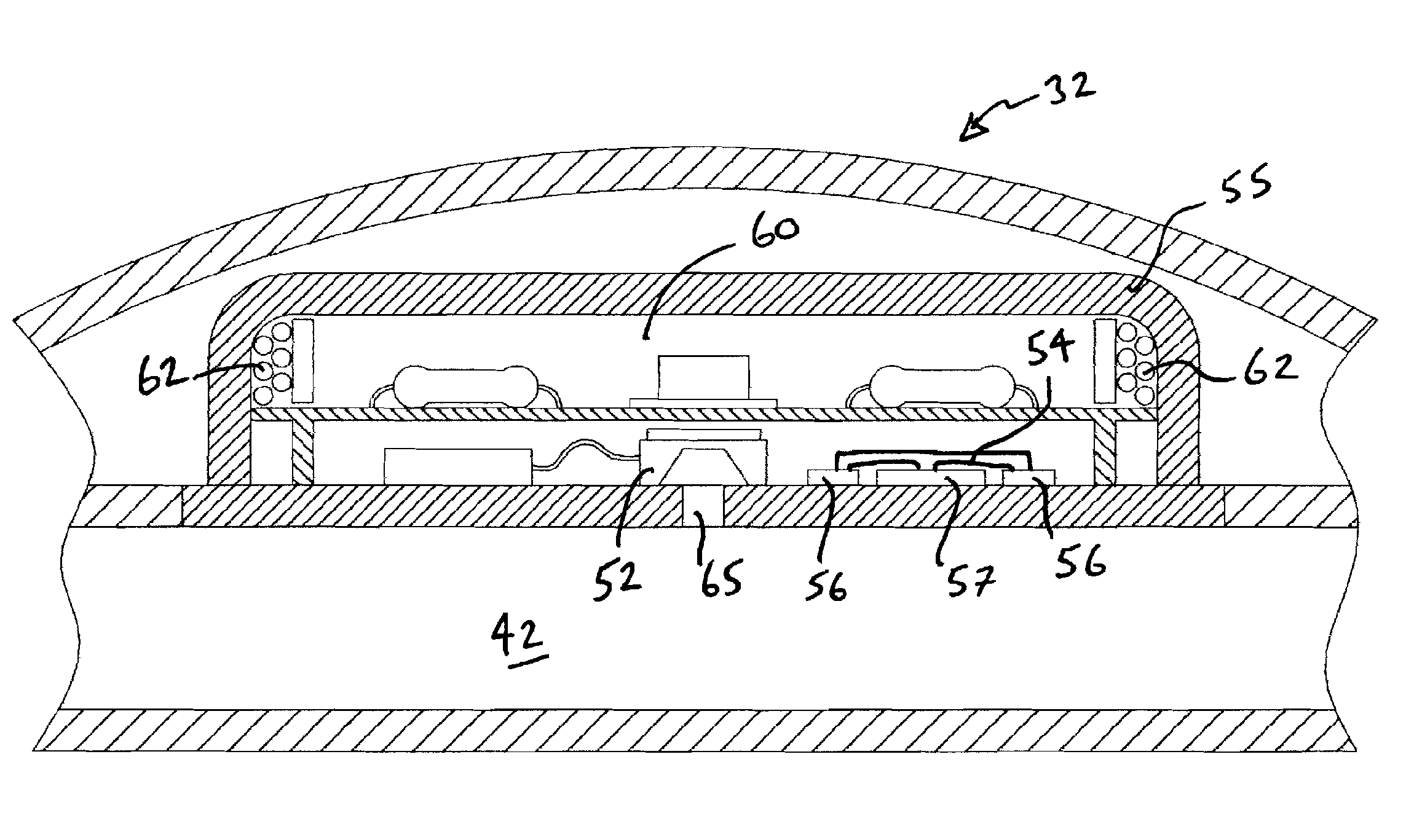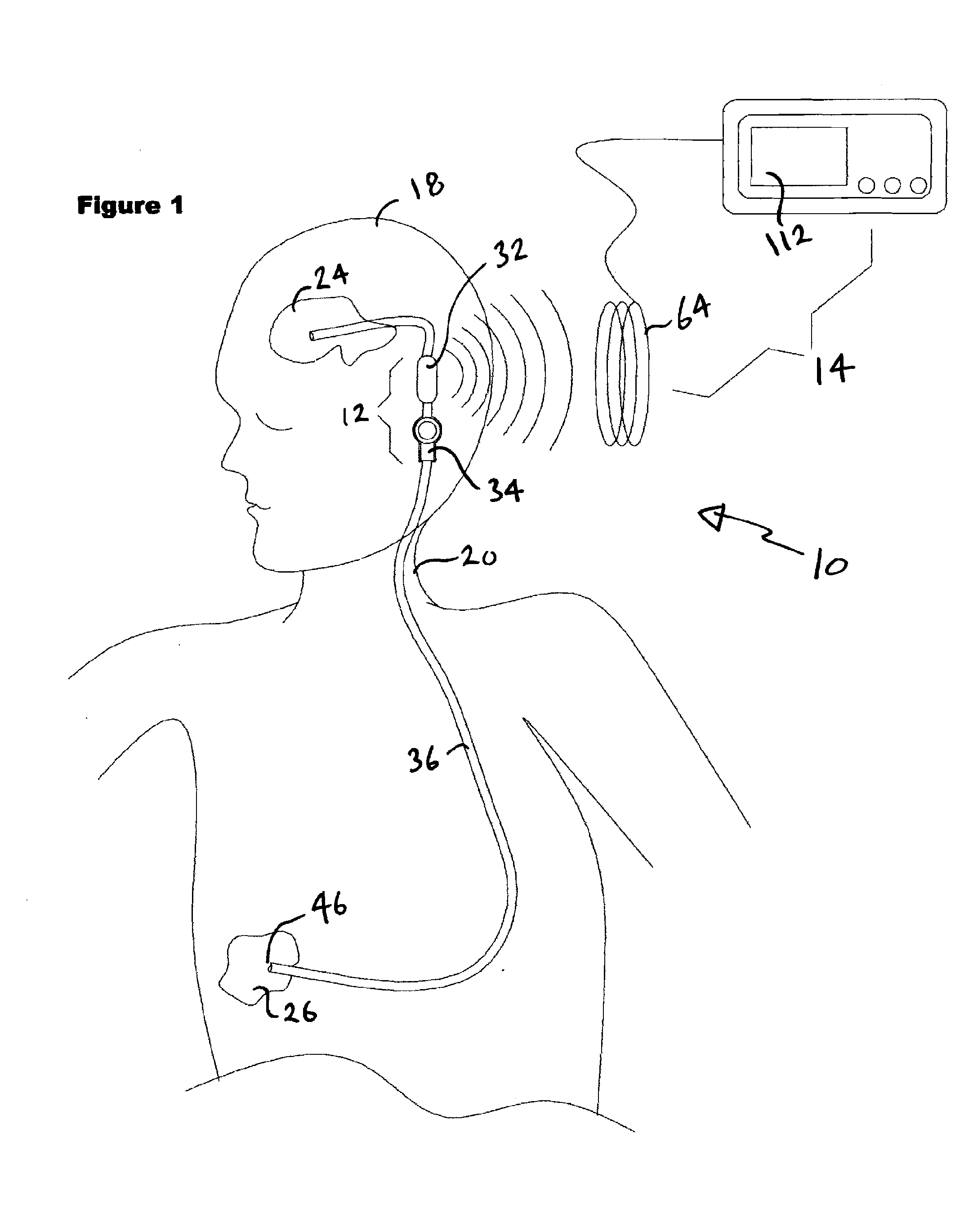Combined Pressure and Flow Sensor Integrated in a Shunt System
a flow sensor and shunt technology, applied in the field of combined pressure and flow sensors, can solve the problems of limited clinical use of existing sensors, limited extended use of pressure sensors, and discontinued commercial distribution of such pressure sensors
- Summary
- Abstract
- Description
- Claims
- Application Information
AI Technical Summary
Problems solved by technology
Method used
Image
Examples
Embodiment Construction
[0045]By way of overview and introduction, the present invention concerns improvements in the shunt that is used as part of a hydrocephalus treatment therapy to divert excess fluid from the lateral ventricles of a patient's brain to a diversion site located elsewhere in the patient's body. As mentioned above in the background section of this patent application, it would be desirable to be able to measure on demand both the pressure and the rate of flow of the CSF within such a fluid-diverting system. It has been shown above that a parameter called “brain compliance” might be a useful value in determining the overall success of the therapy used to treat the patient's hydrocephalus condition and that this parameter can be calculated if the CSF pressure, instantaneous flow rate and steady state flow rate are both known. To this end, the improved shunt of this invention allows for a non-invasive real-time measurement of all three of these parameters. When used together with a reader, fu...
PUM
 Login to View More
Login to View More Abstract
Description
Claims
Application Information
 Login to View More
Login to View More - R&D
- Intellectual Property
- Life Sciences
- Materials
- Tech Scout
- Unparalleled Data Quality
- Higher Quality Content
- 60% Fewer Hallucinations
Browse by: Latest US Patents, China's latest patents, Technical Efficacy Thesaurus, Application Domain, Technology Topic, Popular Technical Reports.
© 2025 PatSnap. All rights reserved.Legal|Privacy policy|Modern Slavery Act Transparency Statement|Sitemap|About US| Contact US: help@patsnap.com



